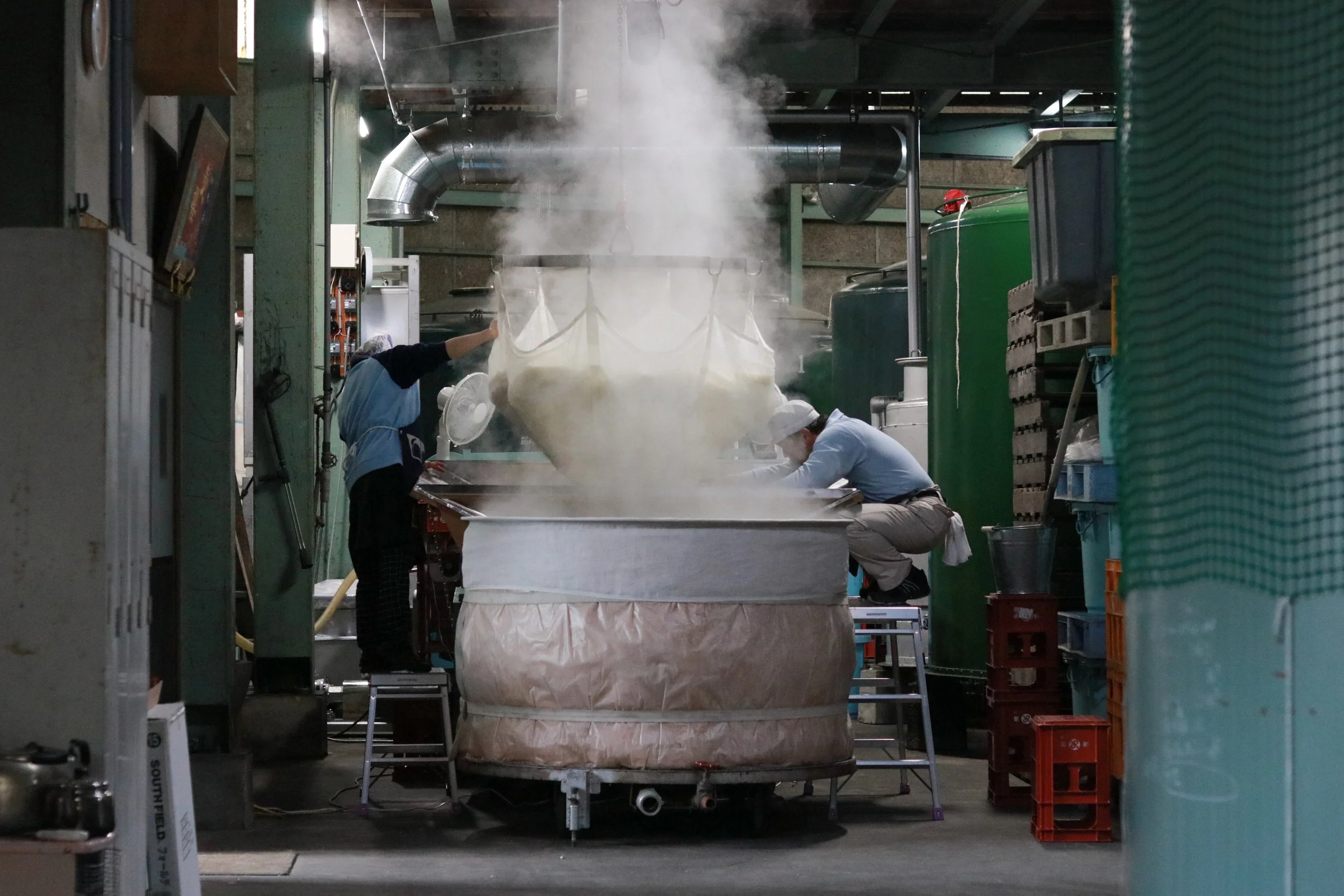Sake and Climate Change
Climate Change in Japan And The World
While tens of thousands gathered at protests for immediate action on climate change in cities across Europe in the week of September 21–27, 2019, a Global Climate Strike event in the world’s largest metropolitan area, Tokyo, only attracted around 2,800 people, among them many international students. Climate change and its implications are not a big topic in the public discourse in Japan, where political interest and engagement, especially among young people, is not common (and often not encouraged).
The changing climate is affecting agriculture all over the world in multiple ways. Rising temperatures cause plants to flower earlier and shorten growing seasons. Rainfall patterns are becoming less predictable, making it difficult for farmers to plan planting and harvesting times. At the same time, extreme weather events like typhoons, and with them landslides, flooding and wind damage, are becoming more frequent.
Many staples of Japanese food culture are endangered by the effects of climate change, as the 2018 government report “Climate Change in Japan and Its Impacts” has made very clear: Decreasing fish stocks and changing migration patterns will mean less seafood on Japanese plates. And cases of degrading rice quality have already reported from throughout the country.
“Sake rice is especially vulnerable to extreme weather, even more so than regular table rice.”
暑い、ね!(It’s hot, isn’t it). According to recent projections, Japan can expect the average temperature to rise by 2.1–4ºC
Extreme Weather and High temperatures
Sake rice plants grow much taller than regular table rice, making them prone to fall over.
Sake rice is especially vulnerable to extreme weather, even more so than regular table rice. Rice varieties used for sake brewing tend to be taller, with older varieties like Omachi reaching 150 cm. Yamada Nishiki still grows to about 120–130 cm and and the top-heavy plants are prone to falling over. Such long stalks are easily damaged by high winds or heavy rain.
While physical damage to the plants is one aspect, global warming also influences their growth and development. According to current estimates, Japan will experience temperatures rise even more than the rest of world. Over the past 100 years, the mean surface temperature in Japan has increased by 1.15°C and is expected to rise by 2.1 to 4.0°C within the next century. The estimated value for the world overall is about 0.8°C.
Annual surface temperature anomalies in Japan (Japan Meteorological Agency)
The effects of global warming on rice can already be observed and cause a range of problems that will only intensify as temperatures continue to rise. A 2009 report from the Institute for Global Change Adaptation Science at Ibaraki University expects rice yields in the Kansai Area to decrease by between 5-20% until the end of this century. The northern regions of Japan would see increases in yield at the same time, but growers (and brewers) would need to adapt rapidly. Furthermore, varieties such as the prized Yamada Nishiki require a clay-rich soil with just the right balance of nutrients that cannot be found just anywhere.
Dangers for sake rice
physical damage from extreme weather events
possible infertility due to high temperatures during flowering
heat causes cracked grains
shortened growth results in smaller grains
immature grains with higher protein content
How Heat Affects The Rice
During the flowering stage, a mean temperature over 30ºC has been linked to higher chances of infertility. Later, during ripening, high temperatures can cause the grains to crack as they dry out. Cracked grains will break apart in the polishing process, absorb water and dissolve too rapidly, making them unusable for brewing. The higher average temperature also shortens the growth duration, which means less biomass, i.e. smaller grains that will be more difficult to polish.
Not only the correct average temperature, but also cooler nighttime temperatures are important for optimal ripening. Recently, ‘tropical nights’ where the temperature does not not fall below 25ºC have become increasingly common during the summer months, as have nights with temperatures over 30ºC. For Osaka Prefecture, the number of tropical nights has been increasing at an alarming rate of +6.3 days per 10 years between 1968 and 2007 (according to a 2008 report by the Osaka Regional Meteorological Agency). These continuously warm temperatures are responsible for immature grains that contain proportionally less starch and more proteins which cause undesired flavours.
In Japan, rice is famed in flooded paddies that are also home to frogs, birds and insects.
What Can be Done
Innovative farming techniques can weaken some of the effects of high temperatures on the plants. Tests have been made to artificially get the rice to open its flowers earlier in the morning to allow pollination while the temperatures are still relatively low, thereby combatting the problem of heat-induced infertility.
Niigata University’s Sake Research Center has a project that aims to further investigate the effects of climate change on sake rice. Scientists are also researching in new rice varieties, but further innovation into heat-resistant rice plants that also fulfil all requirements for sake brewing will be necessary. Several new varieties of table rice have already been developed in the past years and are used on Kyushu.
But development of a new rice variety takes time. Some of the recently released varieties have been in the works for over a decade. The FAO report concludes its chapter on Japan: “Adaptation to avoid these risks requires genetically modified (GM) crops that introduce a new heat-tolerant trait in the rice plant.” Gene editing technologies offer a promising path to solutions, but are heavily regulated and unpopular with the public, although they hold an enormous potential and might be our best option in the battle against climate change.
Brewers and consumers will have to accept that Hyogo-grown Yamada Nishiki cannot be the only choice for premium sake. Luckily, the market is already diversifying and an increased interest in local products with unique profiles has resulted in characteristic sakes produced from local rice varieties that are well adapted to their respective environments.










